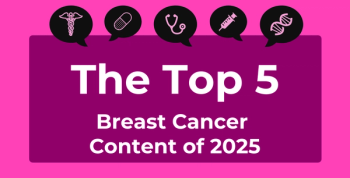
ELN Risk Category, MRD Status Predictive of Relapse in Patients With AML
The study may help explain why some patients are more prone to relapse following a complete response to induction therapy, as indicated by measurable residual disease (MRD) status and 2017 European LeukemiaNet (ELN) criteria.
Several factors—but especially treatment response and cytogenetic risk—appear to correlate with the likelihood of relapse-free survival (RFS) among patients with
The study could help physicians better understand which patients are at highest risk of relapse or death. The report was
Study investigators noted that patients who maintain a complete response for 3 years following treatment are unlikely to experience relapse. They said assessing treatment response includes several factors. For instance, a patient can be classified as having CR or having CR with incomplete count recovery (CRi). They can also be assessed for measurable residual disease (MRD). The authors decided to investigate how factors like remission, quality, time to blood count recovery, and MRD status affected the risk of relapse or death in patients with AML or other high-grade neoplasms following initial CR.
The authors used an institutional database to identify patients who underwent initial induction therapy at their health system between November 2008 and December 2018; the data cutoff was April 2022. They included 656 patients who achieved CR or CRi to in their analysis. Those patients ranged in age from 18 to 91, years and had a median age of 60. Fifty-seven percent of the patients had de novo AML, and 43% had secondary AML, having previously received chemotherapy or had a diagnosis of an antecedent hematologic disorder. Seventy-two percent of the patients had intermediate or adverse risk, according to 2017 European LeukemiaNet (ELN) criteria. For 6 patients, pretreatment molecular and cytogenetic information was not available, the authors said.
Most patients in the cohort achieved CR (82%), and just over a quarter (26%) of patients had MRD.
The investigators looked at RFS at 3 distinct time points: 1 year, 2 years, and 3 years. Two variables were consistently significant predictors of treatment response at all 3 time points. The first was ELN risk category. Those with an intermediate risk level had an OR of relapse or death of 3.77 at year 1 (95% CI, 2.22-6.4) and 3.43 at year 3 (95% CI, 1.95-6.04). Those in the adverse risk category had an OR of 5 at year 1 (95% CI, 2.76-9.03) and an OR of 3.23 at year 3 (95% CI, 1.73-6.06).
In the case of MRD, patients who were MRD positive after CR had an OR for relapse or death of 6.99 at year 1 (95% CI, 4.04-12.01) and 7.91 at year 3 (95% CI, 4.14-15.13).
Other factors, such as older age, white blood cell count, and performance status, were also associated with patient outcomes, but the association was not significant across all 3 years.
“The results stress the importance of posttherapy data (eg, MRD status) in prognostication of outcomes after completing initial therapy,” Percival and colleagues said. “Therapy intensity was not associated with RFS in multivariable models, though notably, the majority of patients received high (64%) or intermediate (24%) intensity induction.”
The authors said their study was strengthened by its large number of patients and the significant follow-up time, although they added that it was limited by the fact that it was a single-center, retrospective analysis.
“Future studies should evaluate strategies to treat patients with MRD since prognosis is poor and effective treatment options are limited,” they said. “Other unanswered questions include evaluating the ideal number of intensive consolidation cycles, the role of maintenance chemotherapy, and the benefit of allogeneic [hematopoietic cell transplantation], particularly in older patients.”
Reference
Lim JJ, Othus M, Shaw CM, et al. Time independent factors that predict relapse in adults with acute myeloid leukemia. Blood Cancer J. 2024;14(1):5. doi:10.1038/s41408-023-00954-z
Newsletter
Stay ahead of policy, cost, and value—subscribe to AJMC for expert insights at the intersection of clinical care and health economics.









































